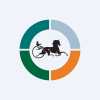
FMP

Pacer Trendpilot US Mid Cap ETF
PTMC
AMEX
The fund invests at least 80% of its total assets (exclusive of collateral held from securities lending) in the component securities of the index. The index implements a systematic trend-following strategy that directs exposure (i) 100% to the S&P MidCap 400® Index, (ii) 50% to the S&P MidCap 400 and 50% to 3-Month U.S. Treasury bills, or (iii) 100% to 3-Month U.S. Treasury bills, depending on the relative performance of the S&P MidCap 400 and its 200-business day historical simple moving average.
37.8 USD
0.1666 (0.441%)
DuPont Analysis
The DuPont analysis, pioneered by the DuPont Corporation, offers a structured approach to assessing fundamental performance. It involves breaking down the return on equity (ROE) into various components, aiding investors in comprehending the factors influencing a company's returns.
ROE = Net Income / Average Total Equity
ROE = (Net Income / Sales) * (Revenue / Average Total Assets) * (Average Total Assets / Average Total Equity)
The company's tax burden is (Net income ÷ Pretax profit). This is the proportion of the company's profits retained after paying income taxes. [NI/EBT] The company's interest burden is (Pretax income ÷ EBIT). This will be 1.00 for a firm with no debt or financial leverage. [EBT/EBIT] The company's operating income margin or return on sales (ROS) is (EBIT ÷ Revenue). This is the operating income per dollar of sales. [EBIT/Revenue] The company's asset turnover (ATO) is (Revenue ÷ Average Total Assets). The company's equity multiplier is (Average Total Assets ÷ Average Total Equity). This is a measure of financial leverage. Profitability (measured by profit margin) Asset efficiency (measured by asset turnover) Financial leverage (measured by equity multiplier)